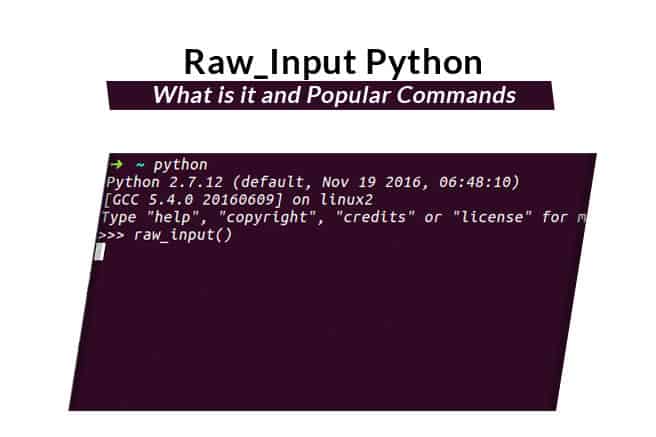The Python raw_input() function is a way to Read a String from a Standard input device like a keyboard. This way the developer is able to include data that is user inserted or generated into a program. Let’s being with some examples using python scripts below to further demonstrate.
It is a powerful, general-purpose, object-oriented and high-level programming language. Python 2 is no longer in development and all new features will be added in Python 3.
In this tutorial, we will explain how to use python raw_input function on Python version 2 and 3 on Linux.
Getting Started
Before starting, make sure Python versions 2.x and 3.x are installed on your system.
You can check Python 2 version with the following command:
python2
You should get the following output:
Python 2.7.6 (default, Nov 13 2018, 12:45:42)
[GCC 4.8.4] on linux2
Type "help", "copyright", "credits" or "license" for more information.
To check the Python 3 version, run the following command:
python3
You should get the following output:
Python 3.4.3 (default, Nov 12 2018, 22:25:49)
[GCC 4.8.4] on linux
Type "help", "copyright", "credits" or "license" for more information.
Basic raw_input() Syntax
The basic syntax for Python version 2.x is shown below:
mydata = raw_input('Prompt :')
print (mydata)
The basic syntax for Python version 3.x is shown below:
mydata = input('Prompt :')
print (mydata)
You can always tell your user what to input by printing a prompt.
Reading Input with in Python 2
There are two versions of input functions used in Python. The input() is used to read data from a standard input in Python 3 and raw_input() is used to read data from a standard input in Python 2.
The function treats the received data as string even without quotes ” or “”.
In this section, we will see how to use this function in Python 2.
Let’s use raw_input() with some example.
For example, create a Python file that asks a user to input their name, use the function to store input value to a variable name then print the value of variable name to standard output.
nano sample.py
Add the following lines:
#!/usr/bin/python
# Version 2
print ("What is your name?")
name = raw_input()
print ("Hello %s! how are you" % name)
Save and close the file when you are finished. Then, run the Python script with the following command:
python sample.py
You will be asked to provide your name, provide your name and hit Enter. You should see the following screen:
Reading Input with input() for Python 3
In Python version 3.x, you will need to use input() instead of raw_input(). The input() function treats the received data as a string if it is included in quotes ” or “”, otherwise the data is treated as a number.
For example, you will need to modify the sample.py file for Python version 3.x as shown below:
nano sample.py
Make the following changes:
#!/usr/bin/python
# Version 3
print ("What is your name?")
name = input()
print ("Hello %s! how are you" % name)
Now, run the sample.py file:
python3 sample.py
You should see the following screen:
Convert String Value To Integer Value in Python 2
If you want to convert string value to integer value then you will need to use int() function.
Let’s create a test.py file that asked you to provide your mobile number, use this function to store input value to a variable name number then print the value of variable name to standard output.
nano test.py
Add the following lines:
#!/usr/bin/python
# Version 2
number = int(raw_input("What is your mobile number ? :"))
print(number)
Save and close the file when you are finished. Then, run the script with the following command:
python test.py
You will be asked to provide your mobile number, provide your mobile number and hit Enter. You should see the following screen:
Convert String Value To Integer Value in Python 3
In Python version 3.x, you will need to modify the test.py file for Python version 3.x as shown below:
nano test.py
Add the following lines:
#!/usr/bin/python
# Version 3
number = int(input("What is your mobile number ? :"))
print(number)
Save and close the file when you are finished. Then, run the script with the following command:
python3 test.py
You should see the following screen:
Conclusion
In the above tutorial, we learned how to obtain user input from the command line with the raw_input function in Python.
We hope you now have enough knowledge to use raw_input function in Python version 2.x and 3.x.




